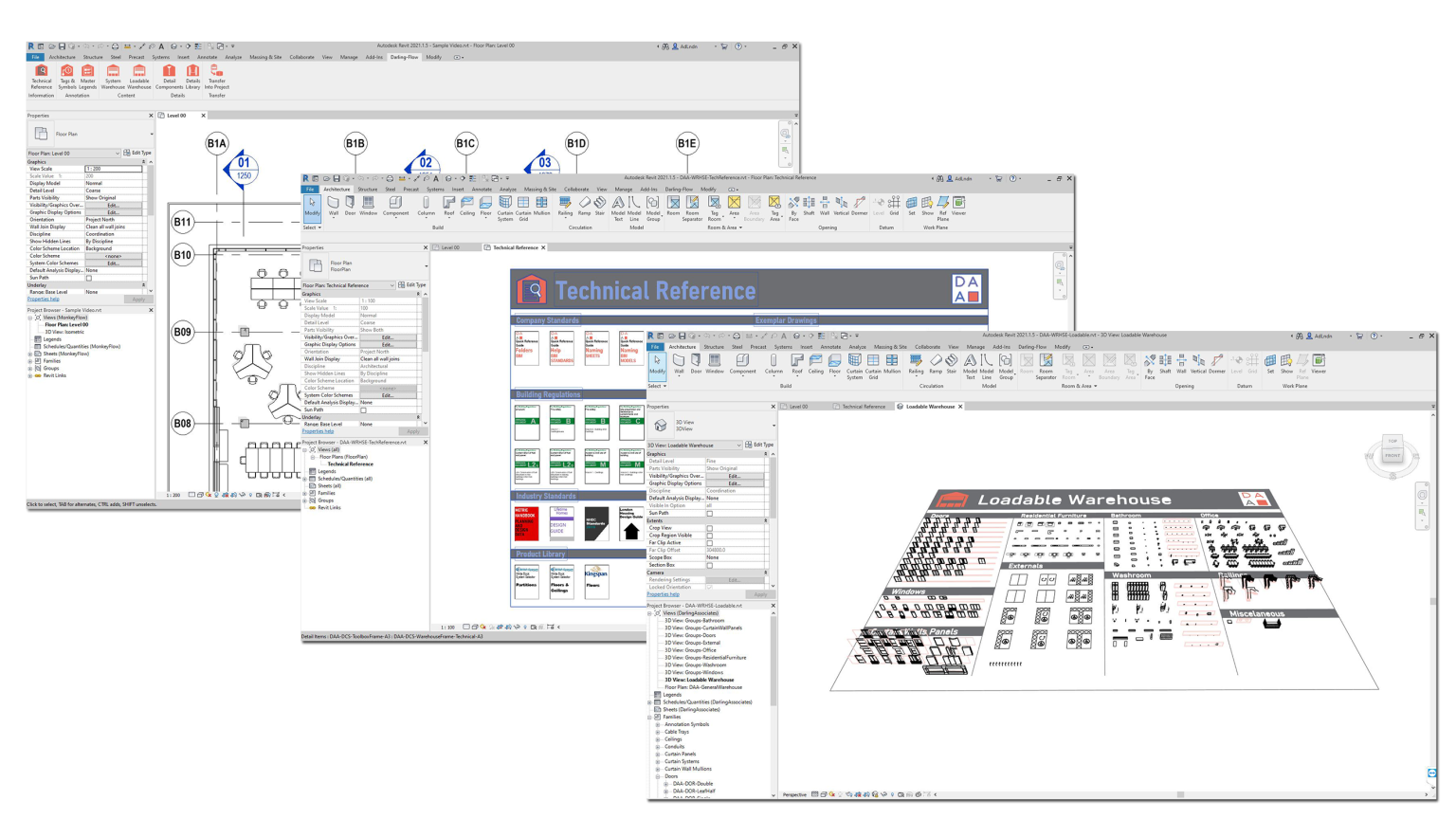Darling Associates
Case Study
Darling Associates are an award winning AJ100 practice, delivering large scale schemes

Introduction
Darling Associates is a medium sized AJ100 practice delivering award winning architectural design services. Their portfolio of projects includes a wide range of residential, office, hotels and retail schemes. Since their inception in 2003, the practice has invested heavily in Autodesk products, initially delivering projects in AutoCAD and then adopting Revit in 2015. The ability to deliver a wide range of projects across both platforms requires an aligned CAD and BIM system.
Problem
With an efficient CAD and Revit system already in place, DA was eager to build on improving staff workflow. Since the introduction of Revit, a misalignment of graphic styles between the two systems was evident, which is common place in the industry.
Furthermore, the absence of a suitable platform to enable inter office sharing of Revit content often led to users repeatedly creating modelled elements. Improving communication between teams was identified as a way of resolving this.
‘We struggled with consistency of graphics and wasted considerable time searching for data’ explained James LeBall, Associate.
AutoCAD and then adopting Revit in 2015. The ability to deliver a wide range of projects across both platforms requires an aligned CAD and BIM system.
Solution
DA recognised the range of benefits of MonkeyFlow systems and implemented a bespoke version of both the CADflow and BIMflow plugins. A dedicated Teams channel was introduced for Revit/CAD content requests and to exchange ideas. Users were encouraged to be more collaborative to improve efficiency.
The bespoke CADflow and BIMflow systems were designed to align with company standards, reflecting DA branding. This provided users with a comprehensive library of content instantly accessible via the ribbon plugins, aligned between both AutoCAD and Revit software.
A Submit Content warehouse button was added to the ribbon to enable newly created content to be submitted easily. This encouraged a smarter workflow of sharing content through improved communication.
This was presented to staff and rolled out across the office.
We struggled with consistency of graphics and wasted considerable time searching for data
James LeBall
Associate
Result
An immediate improvement was noticeable in the efficiency of locating data. ‘Architects like to view things visually so navigating the content is easy’ mentioned Rupert Culvert, Project Director.
With the graphics content aligned, the quality and appearance of drawings was instantly improved.
This is particularly useful where on occasion details are provided in AutoCAD to supplement Revit deliverables. It also enables non-Revit users to provide sketch layouts in AutoCAD and have them easily replicated in Revit. ‘Consistency and quality of data is significantly better’ noted Rupert.
Instant access to the comprehensive libraries of industry compliant data has also proved invaluable. Users can complete work seamlessly with less interruption and reduced margin for error.
There has also been a shift in office culture with users breaking away from the silo mentality and actively discussing their requirements and proposing ideas to improve the content library on the new teams channel.

